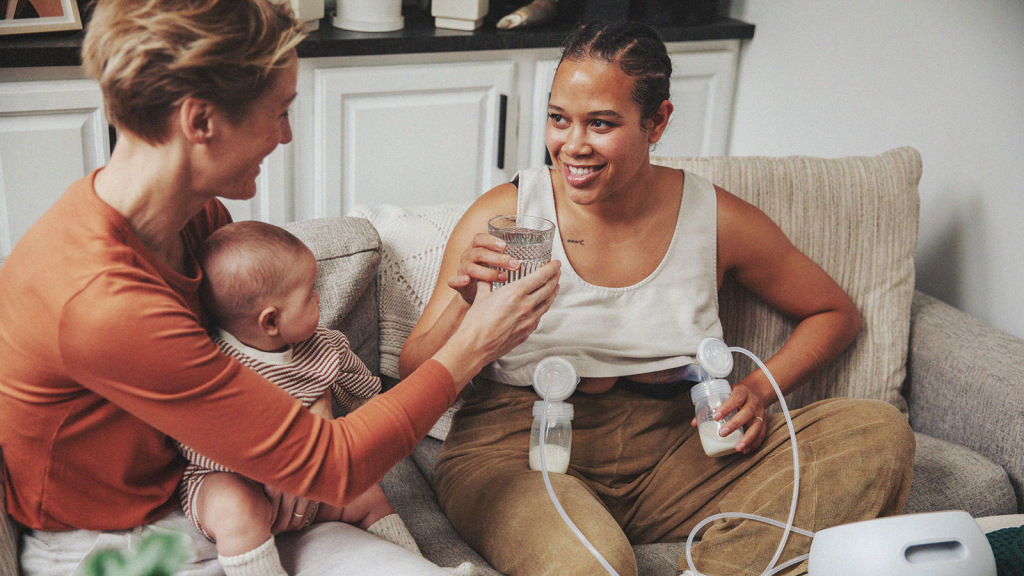Going the Distance: 8 Tips for Cleaning Your Breast Pump
You deserve a breast pump that works hard, fits comfortably, and makes your life as a new parent easier to manage. Like all things, breast pumps require a little maintenance to operate at 100%. Follow these 8 tips to take care of your breast pump, and it will take care of you in return!
1. Replace your pump valves and membranes regularly
Breast pump valves and membranes create suction by making a seal around your nipple. When these pieces start to age, though, they can develop small tears or cracks that render them ineffective. To preserve suction, you should replace valves every two to three months, and replace breast pump membranes every two weeks to two months. It’s also a good idea to keep extra parts on hand—but before you stock up, check with The Lactation Network’s marketplace partners to explore replacement pumps and parts.
2. Dry out your tubing and replace it every three months
Condensation left inside breast pump tubing can cause mold (eek!) and damage your breast pump motor, but you can avoid this unwelcome scenario in a few steps. First, get rid of excess moisture by running the pump with only the tubing attached and removing the milk collection kit. Second, be sure that you thoroughly sanitize breast pump parts according to CDC guidelines after every use, but don’t ever wash or sterilize the breast pump tubing, itself—it will never completely dry. Third, regularly replace your tubing set per your pump manufacturer’s recommendation (usually every three months). If you do spot mold, replace the tubing right away—as always, you can order insurance-covered replacement parts through us.
3. Replace breast shields and connectors twice yearly
Breast shields or flanges are the funnel-shaped parts of your pump that mimic your baby’s suction and enable the release of milk, while connectors link breast shields to milk collection bottles (note: sometimes these two pieces are combined into one). Choosing the correct-sized breast shield is essential for optimal milk flow, the longevity of your breast pump, and your own well-being. Use a flange size chart, like the one Medela provides, to order the right size from the get-go and ensure your pump works for you, not against you. Then, regularly replace your breast shields and connectors according to your pump manufacturer’s recommendation—usually every six months—or when they start to seem cracked or worn.
4. Keep breast milk bottles out of the freezer
Generally, breast milk bottles simply aren’t made to be frozen and can crack at low temps. Instead, pump directly into storage bags to freeze your breastmilk, following CDC breast milk storage guidelines.
5. Replace backflow protectors every three to six months
These soft, round pieces of silicone prevent milk from backing up into your breast pump tubing and possibly damaging your machine’s motor. Generally, backflow protectors need to be replaced every three to six months, depending on how often you pump. Follow your manufacturer’s instructions, and definitely toss them if they seem stretched out or torn.
6. Keep those batteries charged
Look, new parents have a lot to think about. And while battery-operated breast pumps enable pumping on the go, you have to remember to keep them fully charged to maximize milk output. If you find you’re starting to lose suction with your pump, you might just need to recharge your batteries.
7. Protect your pump’s power adapter
As with all mechanical devices, your breast pump needs a power source. If you notice that your adapter cord is twisted or frayed, contact your breast pump manufacturer to secure a replacement. And if your breast pump has an option for a portable vehicle adapter or USB port, consider buying a second adapter to keep in your car or purse.
8. Disassemble, clean, store, and reassemble your pump properly
Once you take apart your breast pump after use, follow the CDC’s recommendations for cleaning breast pump parts in a wash basin or dishwasher—just remember not to wash your tubing set! Then store your clean, dry, reassembled breast pump safely.
If you haven’t quite found your stride with this whole pumping thing yet, we can help! Many breast pump replacement parts and accessories can be found through TLN’s marketplace partners, and an International Board Certified Lactation Consultant can help you find your pumping rhythm. Soon enough, you and your pump will be ready for the long haul.



